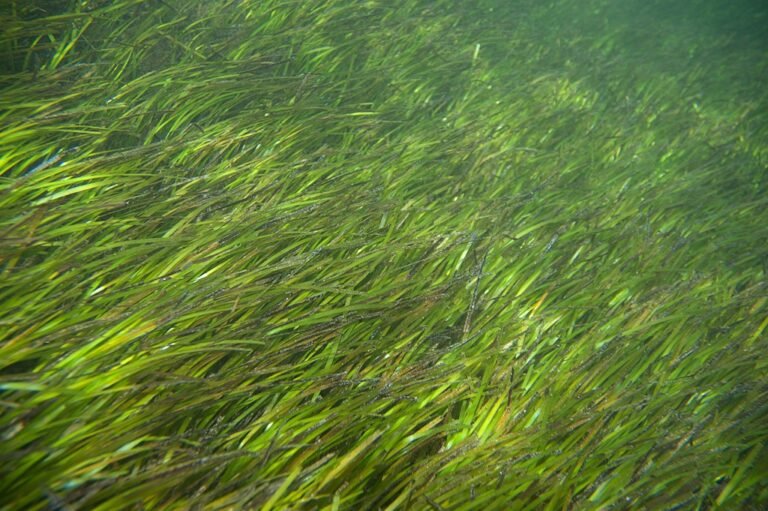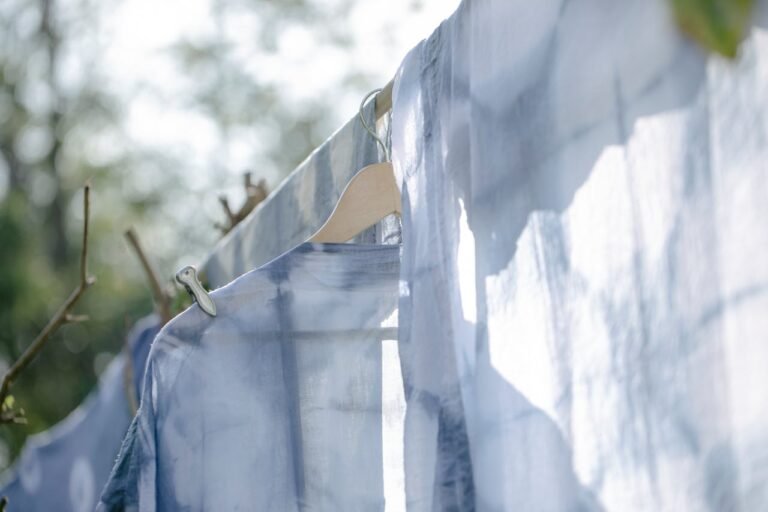Prescribed Burning Cuts Wildfire Damage and Pollution — Here’s the Science
Prescribed burns—also known as controlled or planned fires—aren’t a new idea. Indigenous peoples across North America, Australia, and other regions have utilised fire for thousands of years to shape ecosystems, mitigate fuel buildup, promote biodiversity, and prevent large-scale fires. Over time, ecosystems adapted to and even depended on these controlled flames to maintain balance.
However, the last century brought a dramatic shift with aggressive suppression. In the U.S., the so-called “10 a.m. rule” mandated that any human-caused fire be fully extinguished by the next morning in an effort to prevent escapes. While understandable, this zero-tolerance policy led to a “fire deficit”—a buildup of dry leaves, dead wood, thick undergrowth, and other fuel that now feeds today’s megafires. Wildfire scientist Dr. Susan Prichard from the University of Washington illustrates the risk: “We’re sitting on a tinderbox,” and concludes that correctly executed prescribed burns can reduce wildfire intensity by over 70%. Overwhelming science backs her up.
A clear turning point arrives with a paper from Stanford University, published in AGU Advances on June 26, 2025. This is the first large-scale empirical proof that prescribed fires reduce wildfire severity by approximately 16% and net smoke pollution by 14%. The study analysed 186 low-intensity burn sites in the U.S. West between 2018 and spring 2020, all of which later burned during the intense 2020 fire season.
Here’s how the Stanford team—led by Makoto Kelp and others—structured their investigation:
- They compared satellite data, land records, and smoke emissions from treated vs. untreated plots during the 2020s’ extreme fire events.
- Results: treated zones burned with only 17% of the smoke wildfires that would have been produced.
- Severity in treated forests was consistently lower than in untouched areas, and prescribed burns even outperformed mechanical thinning in reducing fire intensity
In practical terms, prescribed burns give land and fire managers a tool to mitigate wildfire damage efficiently. By planning where and when to burn—under favourable weather and environmental conditions—they can minimise risks while maximising ecological gain.

Why Prescribed Burns Matter
1. Cutting the Smoke Clouds
When wildfires break out unexpectedly, they can produce massive, dense smoke clouds that travel for hundreds or even thousands of miles. This smoke carries a cocktail of harmful particles and compounds—PM₂.₅, carcinogens, heavy metals—that linger in the atmosphere and seriously impact public health. Experts have found that wildfire smoke contains not only standard pollutants but also airborne pathogens, such as fungal spores, capable of travelling great distances and causing infections. For example, a Nature Communications Earth & Environment study noted that between 2006 and 2020, wildfire smoke led to approximately 15,000 deaths and $160 billion in economic losses in the U.S.
In contrast, prescribed burns—carefully planned, controlled fires—emit smoke on a much smaller scale, both in intensity and duration. Because professionals schedule them under favourable conditions, the smoke disperses faster and avoids dense urban areas. According to the EPA’s CAIF report, while prescribed fires do produce smoke, it’s far less damaging than the smoke from wildfires—and importantly, these intentional burns can significantly reduce future wildfire smoke emissions. In short, although both fire types release smoke, prescribed burns operate on a safer scale and help protect public health.
2. Empowering Forest Resilience
Prescribed burning isn’t just about reducing smoke—it also brings forests back to their natural, healthier state. Historical studies, such as tree-ring data, show that before active suppression efforts, fires—much like our modern prescribed burns—occurred naturally and regularly, clearing away debris and promoting new growth without destroying entire ecosystems.
A 2023 study found that when forests are managed with routine low-intensity burns, the risk of devastating wildfires drops dramatically—Yosemite’s Rim Fire in 2013 is a good example. Areas that had previously undergone thinning and prescribed burns saw significantly reduced fire intensity and no structural losses within those zones. Essentially, prescribed burns restore forests’ pre-suppression mosaic: open understories, fire-resistant plant species, and healthier wildlife habitats.
Even though these burns emit smoke locally, research shows the regional air-quality impacts are significantly less damaging than wildfire scenarios. For instance, a study in Georgia revealed that prescribed burn particles contributed about 10–15 % of annual PM₂.₅ on average, and up to 20–30 % during peak burning season. But the same particulate matter from wildfires is more harmful—scientists found wildfire PM₂.₅ to be up to 10 times more toxic than regular urban PM₂.₅. A more controlled analysis by Kelp et al. showed that prescribed burns could substantially reduce regional exposure to PM₂.₅ compared to wildfire scenarios, indicating that long-term public health benefits outweigh short-term smoke effects.
3. Shielding Communities
In the same study in Georgia, wildfire smoke has been linked to a range of issues: asthma, heart attacks, preterm births, dementia, and even mental health challenges. According to the EPA, the surge in wildfire-related PM₂.₅ has prompted spikes in hospital visits, especially among vulnerable groups like kids, the elderly, pregnant individuals, and those with respiratory problems.
By comparison, prescribed burns, executed under optimal conditions, can actually reduce severe smoke episodes and lessen emergency visits. A Nature Sustainability study noted that moderate prescribed burning cut asthma-related emergencies, even with a temporary uptick in smoke. And though prescribed burns increase brief local smoke exposure, models show that this is outweighed by preventing far larger wildfire smoke plumes and thus reducing extreme health burdens.
Backing this up, U.S. health modelling found that between 2008–2016, about 48,000 cardiorespiratory emergency department visits linked to PM₂.₅ occurred each year. Of these, wildfire smoke accounted for nearly half (47.9%), while prescribed burn smoke contributed only around 6.3%. That ratio underscores the protective impact of carefully timed burns, even as we expand them.
Real Stories that Prove “Good Fire” Works
1. A California Tribal Steward
Aja Conrad, a member of the Karuk Tribe in Northern California, grew up watching her elders use controlled burns to care for the land. In one Bacon Flat burn, she led a crew laying fire strips in pine forests near the Klamath River. She told Boise State Public Radio, “It feels damn good to be out here doing that,” reconnecting her people with ancestral fire stewardship that protects both forests and nearby communities.
2. British Columbia Wildfire Technician
In March 2025, Conlan Sprickerhoff from the BC Wildfire Service led a 7–10 hectare burn near Kamloops. He walked rows of sagebrush and fallen needles to reduce fuels. After the burn, he reported seeing “lower intensities” and “more moist” brush — exactly the result needed to slow future wildfires.
3. New Mexico Community Buffers
The Carson National Forest team created a “catcher’s mitt” of thinned stands and controlled burns around Vallecitos. This “buffer zone” helped limit the 2022 Midnight Fire’s spread, shielding homes and watersheds.
Learning from Escapes & Scepticism – Challenges and Solutions
The Hermits Peak Lesson
In April 2022, a prescribed burn in New Mexico went awry. Two controlled burns in the Santa Fe National Forest merged and exploded into what became the Hermits Peak–Calf Canyon Fire, the most destructive wildfire in the state’s history, consuming more than 340,000 acres and destroying over 900 structures. This alarming event reminded everyone that even with low escape rates, the stakes are incredibly high when things do go wrong. In response, the U.S. Forest Service carried out a full program review, tightening planning standards, updating protocols, and ensuring more staff and backup were available—because, as one official put it, “when you play with fire, there’s no margin for error.”
Why Escapes Are Rare—but Can Happen
It’s true that escapes are rare. Historically, less than 2% of prescribed burns escape on federal lands, and the Forest Service averages fewer than six escapes out of around 4,500 burns yearly, well under a 1% rate. More detailed data suggest upwards of a 99.8% success rateensia.com. Still, even small-number escapes can have outsized effects, so land managers treat each controlled burn as a high-stakes operation, with strict weather windows, trained crews, and community outreach built into the plans.
Public Doubts and Air Quality
Despite strong evidence supporting controlled burns, public scepticism remains. A 2025 survey in BMC Public Health found that people who’d endured wildfire smoke were nearly twice as likely to endorse prescribed burns. However, concerns about smoke exposure and fire escape risks linger, driven by gaps in trust and limited understanding of how these burns are managed.
Back in 2022, Time reported that just one-third of Americans “strongly approved” of prescribed burning, with most citing fears around smoke and potential escapes. However, these fears often stem from misinformation or a lack of firsthand experience. Many communities have never been directly involved in or educated about prescribed fire practices, leading to misunderstandings about their purpose, safety measures, and benefits.
Toward Greater Acceptance – More Transparency, Better Planning
The formula for boosting public trust lies in better communication and community partnership. Agencies are increasingly using tools like real-time smoke forecasting, ground-level monitoring projects like the UK’s “FireUp,” and proactive notifications about burn schedules. Engaging directly with neighbours, explaining why burns happen, and showing data on short-term impacts versus long-term benefits consistently earns trust.
To be sure, the solution is not to stop using fire—it’s to use it thoughtfully. When land managers integrate rigorous planning, science-based decision-making, and strong community outreach, prescribed burns can safeguard forests, reduce the risk of catastrophic wildfires, and ultimately lower overall smoke exposure. As that evidence base grows and people see fewer mega-fires, acceptance will likely grow too.
Actionable Advice: How to Deploy Prescribed Burns Well
Successfully using prescribed burns to restore landscapes and reduce wildfire risk requires thoughtful planning, community support, science-based tactics, and honest post-burn review.
Careful Planning: Start by monitoring weather thoroughly—humidity, wind, and temperature all matter. Use real-time air quality models to forecast smoke dispersion so neighbours aren’t caught off guard. Choose the right scale and location: focus on forest areas rather than shrublands, and avoid doing burns near dense housing unless controls are rock-solid.
Public Engagement: Build strong communication channels early—explain permits, plans, and timelines clearly. Share health alerts, offer masks if needed, and coordinate with schools to manage outdoor activities during burn days.
Optimisation: Rely on peer-reviewed guidelines to set burn parameters (moisture levels, ignition patterns, etc.) that minimise pollutant release. For instance, research shows controlling moisture and heat flux can lower carcinogenic smoke emissions by around 50%.
Comprehensive Fire Science: Pair burns with mechanical thinning, trail creation, and even targeted grazing to reduce buildup. Actively involve Indigenous landkeepers; their deep ecological knowledge enhances outcomes and supports biodiversity.
Adaptive Review: Monitor results—did fire severity stay low? Were emissions within targets? Track escape rates. Use community sensors and health data to measure impacts on air quality and well-being. Then, adjust practices accordingly. This cycle of action and review helps burns stay safe, effective, and socially trusted.
Learn More: What is Fire Weather?
Your Wildfire-Resilient Toolkit: Key Takeaways
- Support Prescribed Burn Programs: Whether you live in or near a forested area, advocate for safe, locally managed prescribed burns that reduce wildfire risk.
- Stay Informed About Smoke Alerts: Monitor health department advisories during burn seasons and use N95 masks when necessary to protect your lungs.
- Push for Community Air-Sensing Networks: Encourage the installation of local air quality sensors—especially in communities near fire-prone landscapes—to help track smoke exposure in real time through data apps.
- Promote Balanced Fire Management: Engage with local fire agencies about combining thinning efforts with prescribed burning for healthier, more resilient forests.
- Support Indigenous Knowledge and Leadership: Uplift Tribal voices by involving Indigenous communities in fire stewardship and land management planning.







